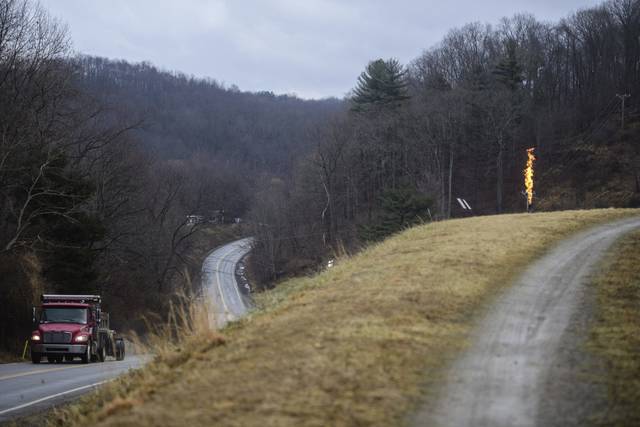https://triblive.com/local/westmoreland/groups-call-for-end-to-deep-well-activity-near-beaver-run-reservoir/
Groups call for end to deep well activity near Beaver Run Reservoir

As state officials investigate a January pressure drop at a Washington Township deep gas well that affected other shallow wells near Beaver Run Reservoir, local environmental advocacy groups are calling for an end to all well drilling and fracking near the public water source in northern Westmoreland County.
The groups are drafting a letter asking the state Department of Environmental Protection to “halt all existing and future (well) permits around the reservoir because we feel this should be a protected water source,” said Gillian Graber, executive director of Protect PT, a Penn Township-based environmental group that has opposed natural gas development in the township and surrounding communities. “We feel that it should be more protected than it has been in the past.”
The groups — including the Westmoreland Marcellus Citizens Group and the Mountain Watershed Association, a Melcroft-based organization that advocates for tighter regulations on shale gas development — also are calling for increased testing at the reservoir for possible pollutants related to shale gas drilling and production.
At an informational meeting the groups organized Thursday at the Delmont fire hall, they cited 13 incidents that released contaminants near the reservoir since July 2012.
“They might think that, once the investigation is done, that’s it,” Graber said. “But for us, the residents who use this water source, it’s not done.”
John Ashton, assistant manager for the Municipal Authority of Westmoreland County that supplies about 130,000 customers with water from the reservoir, said testing has shown no impact on water quality there since the pressure incident occurred in late January.
When the authority learned of the incident, Ashton said, it ordered daily sampling at three sites on the reservoir that were below gradient from the affected well. He said the sampling schedule was reduced to three times a week after the operator, CNX Gas Co., reported the problem well had been shut down.
The authority has said it received legal advice that it could not prevent shale well production near the reservoir because of existing mineral rights agreements.
CNX has said it believes an isolated “casing integrity issue” about a mile underground was responsible for the significant drop in pressure during fracking Jan. 25-26 at its Shaw 1G deep well near the reservoir.
While the state Department of Environmental Protection investigates what it has termed a “catastrophic loss of pressure” and a “well control emergency” at the Utica shale deep well, it has issued CNX a related notice of violation.
The notice of violation cited “failure to construct and operate a well to ensure that the well integrity is maintained” and “failure to equip the well with casings of sufficient strength.”
It doesn’t constitute an enforcement action or the DEP’s final evaluation of the incident.
The late January pressure drop was accompanied by pressure increases at several nearby shallow oil and gas wells not owned by CNX. Flaring — burning off of flammable gas — was required at the shallow wells through Feb. 12, to reduce the pressure.
CNX successfully “killed” its problematic well by Feb. 4 by pumping heavy mud and cement into the well, essentially sealing it off.
It has informed the DEP it intends to permanently plug the well.
Spokesman Brian Aiello has said CNX officials “continue to believe that the casing breech is isolated to this well” and would provide the DEP with information it requested about the Shaw 1G well and the Canonsburg company’s other well sites.
All hydraulic fracturing operations on the Shaw well pad remain suspended while CNX also investigates the incident.
CNX has said three other wells on the Shaw pad are not in its 2019 or 2020 carryover plan, “but remain an opportunity for completion or (turn-in-line) in the near future.”
There are three Marcellus wells and four Utica wells on the pad, according to the DEP.
Fracking has been occurring near Beaver Run Reservoir since 2011. Seven CNX well pads on property owned by the municipal authority have 45 Marcellus wells and seven Utica wells, according to the company.
Copyright ©2025— Trib Total Media, LLC (TribLIVE.com)
